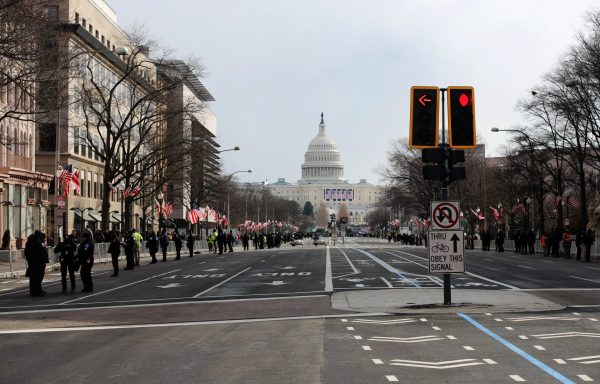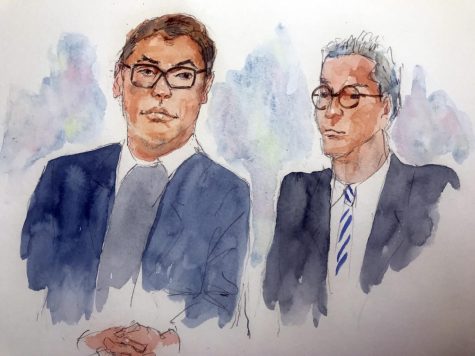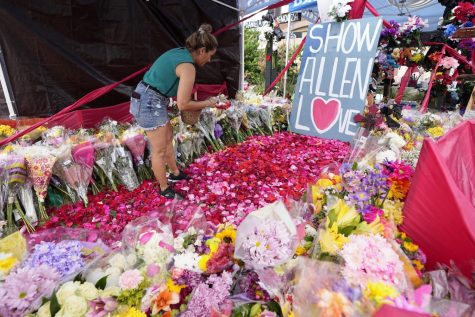Two years on, the battle against Covid-19 continues
Workers in protective gear bury a coronavirus victim during a funeral at a cemetery in Yogyakarta, Indonesia, Thursday, Feb. 17, 2022. (AP Photo/Slamet Riyadi)
A whole lot can happen in two years.
On March 11, 2020 — just over two months after the U.S.’s first confirmed case of Covid-19 — the World Health Organization officially declared Covid-19 a pandemic, solidifying the notion that SARS-CoV-2 would soon ravage nearly every corner of the earth.
733 days, 457 million cases and over 6 million deaths later, Covid-19 has radically reshaped the world and continues to inflict unprecedented damage as government and public health experts continue attempts to mitigate its mass casualties.
Despite Covid-19’s rapid rise, public health scientists across the globe have cooperated since the pandemic’s impetus to strengthen one another’s efforts against the disease.
“It’s honestly incredible when we think about the fact that every time there’s a new variant, we know there’s a new variant because someone’s sequencing it,” said Paige Larkin, director of molecular microbiology at NorthShore University HealthSystem. “New collaborations have formed. New communications have formed as a result of this pandemic. We’ve never really had such a worldwide effort to stay informed about pathogens, and that’s really a beautiful thing.”
The U.S. government’s initial response was not nearly as cohesive. As Covid-19 cases spread into every state, the federal government took a particularly hands-off approach regarding public safety measures, forcing state governments to determine and enforce their own protocols.
“There was a time in the beginning where states were bidding against each other for masks and for medical PPE from manufacturers because the federal government wasn’t really distributing what they had and wasn’t going to buy or coordinate,” said Craig Klugman, Vincent de Paul professor of health sciences at DePaul. “So the states were sort of on their own negotiating these things.”
Furthermore, what medical equipment the federal government did have saved in the Strategic National Stockpile was neither sufficient in quantity nor quality to meet the pandemic’s scope and severity, and logistical failings ensured that what functioning equipment the government did have would not be efficiently mobilized.
“It turned out we didn’t have working ventilators — the ventilators we had in storage had never been maintained, so they didn’t work,” Klugman said. “We didn’t have as many masks and gowns as we thought we did. We didn’t have a good system for distributing those [either] — nobody had set that up.”
Additionally, the vast spread of misinformation via both traditional and social media outlets — including an excess of falsehoods propagated by then-President Donald Trump — has made it increasingly difficult to create a unified public defense against Covid-19. According to a November 2021 KFF report, 78 percent of U.S. adults either believe or are unsure about at least one false statement regarding the Covid-19 pandemic or Covid-19 vaccines. On top of this, public perception of protective measures against Covid-19 quickly became a partisan issue as opposed to just a public health one, further splintering the nation’s response to the pandemic.
As the U.S. lacked a collective public health response, Covid-19 continued to spread state to state at breakneck speed. On March 27, 2020, the U.S. reached 100,000 confirmed Covid-19 cases. By April 28, the nation’s case total had risen to one million. As of Sunday, that number has risen to 79.4 million cases.
With such high case rates, hospitals across the country have been severely overburdened for years — a burden that continues to this day.
“It’s not only the doctors and nurses — we have respiratory therapists, physical therapists, janitorial staff, admin — and every single person is important to keep a hospital system functioning,” Larkin said. “And so, I feel like every person in health care has really had to put their work and patient safety first. I don’t think it’s always recognized how everyone’s tried to stay as safe as possible so they could come to work and take care of their patients. The amount that people have given up and sacrificed to keep everyone safe and keep the health care system afloat — it’s been incredible, honestly, to see that.”
That burden has impacted far more than just health care workers and Covid-19 patients. Excess deaths indirectly caused by the Covid-19 have remained prevalent since hospitals first grew strained early into the pandemic.
“When Covid happened, we told people to stay away from hospitals, stay away from doctors,” Klugman said. “We thought it was dangerous to be in those environments and we didn’t want to burden the system. So people didn’t get colonoscopies, didn’t get mammograms, didn’t get screening for cancer. The result was delayed surgeries, delayed chemotherapy and radiation treatment. So by the time they finally got diagnosed and treated, things were that much worse. That means more people are likely to die, or they’re never diagnosed and they just die.”
Through a combination of patients avoiding hospitals and emergency rooms reaching full capacity due to Covid-19 surges, an estimated 18.2 million people globally have died as a result of the pandemic — over three times more than the reported global Covid-19 death count. In the U.S. alone, experts estimate that 1.13 million excess deaths related to the Covid-19 pandemic have occurred.
By far the most impactful contributor to lowering the risk of contracting Covid-19 and not developing serious symptoms has been the development of vaccines. Prior to the development of a Covid-19 vaccine, no infectious disease had received a successful vaccine in less than several years, and no vaccine had ever been created that could prevent a coronavirus infection in humans. Despite this, the first Covid-19 vaccines were created and safely approved for emergency use within months of initial efforts through the use of decades-old vaccine technologies and shortened wait times during development.
Since Dec. 10, 2020, when the Food and Drug Administration first granted emergency use authorization to the Pfizer-BioNTech vaccine, 254.5 million Americans — 77.2 percent of the population — have received at least one dose of a Covid-19 vaccine.
“I’m optimistic,” said Mary Jo Ondrechen, chemistry and chemical biology professor at Northeastern University. “I think that the science can solve the problem if people have the will to implement the solutions — but it will take political will, and it takes commitment by people.”
Currently, that commitment has not been made by much of the population. Largely stemming from the promulgation of misinformation, vaccine hesitancy has seemingly solidified a group of Americans who outright refuse to take the Covid-19 vaccine, creating a significant roadblock for public health experts attempting to slow the spread of the virus.
“There’s a certain percentage of the populace that simply will not take the vaccinations,” Ondrechen said. “Those lies about vaccination and the lies about the disease were already baked in, and I don’t think those people who believe that stuff are going to believe any technical expert or any member of the current administration.”
Equally as, if not more significant in determining the pandemic’s future, is the global inequity surrounding vaccination rates. Currently, only 14 percent of people in low-income countries have received at least one dose of a vaccine, compared to 79 percent of people in high- and upper-middle-income countries. Ondrechen explains that by maintaining largely unvaccinated populations across the globe, humanity allows the virus to spread more easily, increasing the likelihood of more dangerous variants forming.
“More transmissions [means] more infections [and a] higher chance that a deadlier new variant is going to crop up,” Ondrechen said. “So it is in everybody’s self-interest to get the world vaccinated and to get viral treatments available worldwide. We need to vaccinate the world, and the countries that can afford it need to donate vaccinations [and fund] the implementation to get crews out there and get the vaccines out there into people’s arms.”
While a lack of political and financial willpower has made it particularly difficult to fund such efforts, there’s been one major hurdle that no amount of money has yet been able to fix: mRNA Covid-19 vaccines like Pfizer-BioNTech’s and Moderna’s require particularly cold temperatures in order to avoid degrading.
“If you’re going to sub-Saharan Africa where you might not have access to electricity and it could take you 40 hours to get from the manufacturer to a small village, how do you keep these [vaccines] cold enough when they can only be outside the fridge for a few hours?” Klugman said.
However, researchers have mobilized to address logistical concerns throughout the entire pandemic, and issues regarding vaccine mobility have been no different. Currently, a number of research teams are developing nasal spray vaccinations that would require little to no training to administer and could be stored at room temperature, bypassing two of the most significant hurdles towards global vaccination efforts.
As citizens across the world head into their third year with Covid-19, massive swaths of the population have grown burnt out due to years of mitigation efforts — however, Ondrechen emphasizes that such efforts are as crucial as ever, as the pandemic remains far from over.
“We’re up against people being very tired of the virus,” she said. “But the virus isn’t tired. The virus is still here.”








john n bergmann / Mar 17, 2022 at 5:15 pm
I FEEL THIS IS A VERY POLITICAL WRITING. VERY SURPRISED TO GET THIS IN MEDICAL ARTICLE